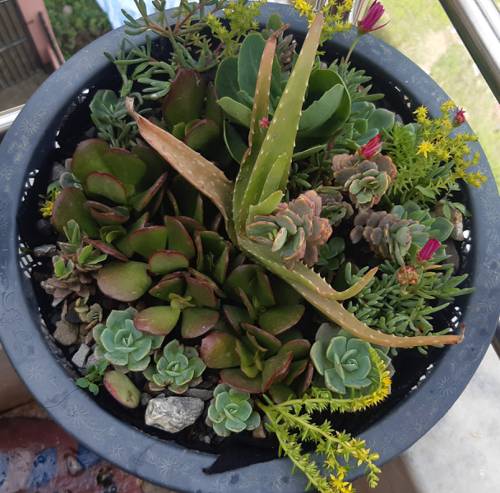
FAQ About Indoor Plant Waste Minimization Practices

What are some effective ways to minimize waste when caring for indoor plants?
To minimize waste in indoor plant care, you can start by using organic fertilizers and pest control products, which produce less harmful residue. Composting plant trimmings and leftover food scraps can also help create nutrient-rich soil. Additionally, reusing containers and repurposing household items as plant holders can significantly reduce plastics and materials waste.

How can I recycle or repurpose plant trimmings and dead leaves?
Plant trimmings and dead leaves can be added to a compost bin to decompose into rich soil or mulch. Alternatively, you can use them as a natural mulch layer on the soil surface to retain moisture and suppress weeds. For creative projects, some people use dried leaves in art and craft projects, such as creating leaf prints or natural decorations.

What materials from indoor plant maintenance can be reused?
Many materials from indoor plant maintenance can be reused, including plastic pots, trays, and containers. You can wash and sterilize these items for future plantings. Old plant stakes can be reused or resized for new plants, and soil can be refreshed and reused by mixing it with compost or other organic materials to replenish nutrients.

Are there sustainable alternatives to plastic plant pots?
Yes, there are several sustainable alternatives to plastic plant pots. Consider using pots made of biodegradable materials such as coir, clay, or bamboo. Other creative options include upcycling household items like teacups, glass jars, or metal cans as plant containers. These alternatives not only minimize environmental impact but also add unique aesthetics to your home decor.

What is the best way to dispose of old or diseased plants responsibly?
To dispose of old or diseased plants responsibly, avoid adding them to your compost as they can spread diseases. Instead, consider taking them to a local green waste facility where they can be processed properly. If the disease is not severe, you can sometimes burn the plant material in a safe, contained manner, ensuring compliance with local regulations.

Can indoor plant soil be recycled or reused?
Yes, indoor plant soil can often be recycled or reused. Before doing so, ensure that the soil is free from pests or diseases. You can refresh old soil by mixing it with new potting mix, compost, or organic matter to replenish nutrients. Sifting is also helpful to remove any debris or roots before reuse.

How can I ensure my indoor plant care practices are sustainable?
To ensure sustainable indoor plant care, integrate practices like using organic products, recycling materials, and implementing water-saving methods like using self-watering planters or capturing rainwater. Focus on using durable, eco-friendly materials and consider the longevity and environmental impact of your plant choices and care techniques.

What types of composting can I use for indoor plant waste?
For indoor plant waste, you can use traditional composting methods if you have outdoor space, or opt for worm composting (vermicomposting), which is more compact and ideal for indoor settings. Bokashi composting, a fermentation process for all kinds of organic waste, is another option suitable for indoor environments.

How can rainwater be used in indoor plant care?
Rainwater can be an excellent resource for watering indoor plants as it is free from chemicals found in tap water, like chlorine. Collect rainwater using barrels or buckets during rains and store it in clean, covered containers to prevent algae growth and evaporation. This recycled water can then be used to hydrate your plants, reducing dependency on municipal water resources.

Is it possible to make my own plant fertilizers at home?
Yes, it is possible to make homemade plant fertilizers using items typically found in your kitchen. For example, you can use crushed eggshells to add calcium to the soil, banana peels soaked in water for potassium, or coffee grounds for nitrogen. These natural fertilizers are not only cost-effective but also reduce the waste reaching landfills.

Can indoor plant watering be optimized to reduce waste?
Indoor plant watering can be optimized by using methods such as self-watering pots, which help prevent overwatering and water wastage. Additionally, testing the soil moisture with your fingers before watering can ensure that plants receive only the water they need. Collecting water drainage to reuse for other plants is another efficient practice.

What is vermicomposting, and how can it help with plant waste?
Vermicomposting is a method of composting that uses worms, typically red wigglers, to decompose organic waste into rich, nutrient-dense compost known as worm castings. This method is suitable for indoor setups and can efficiently process kitchen scraps and plant waste into valuable compost for your indoor plants.

How can I avoid using chemical pest control in indoor plant care?
To avoid using chemical pest control, you can adopt natural methods like introducing beneficial insects such as ladybugs or using neem oil and insecticidal soap to tackle common pests. Regularly cleaning plant leaves and ensuring proper air circulation can also deter pests naturally, reducing the need for chemical interventions.

What are some creative ways to upcycle household waste as planting materials?
Household waste can be creatively upcycled as planting materials, such as using old containers like mugs, jars, tins, and even shoes as plant pots. Broken crockery or ceramics can serve as drainage materials at the pots' base, and fabric scraps or old t-shirts can be turned into decorative plant hangers or pot covers.

How can I identify if my plant's health issues are due to improper waste management?
Health issues in plants related to improper waste management may include stunted growth, yellowing leaves, or poor flowering. These can be symptoms of nutrient deficiency possibly caused by inadequate reuse or enrichment of soil, or pest infestation due to not using clean or sterilized recycled containers. Addressing these issues with correct waste management practices can help revive plant health.

Are there community programs for indoor plant waste recycling?
Many communities offer programs for recycling and managing plant waste, including curbside green waste pickup and drop-off locations for compost and recycling. Some botanic gardens or local gardening clubs may also organize plant swap events, where you can exchange plants and materials, reducing waste and fostering community engagement.

How can I reduce packaging waste when purchasing new indoor plants?
Reducing packaging waste can be achieved by buying plants locally from nurseries that offer bare-root options or bring-your-own-container programs, avoiding plastic pots and excess packaging. Purchasing in bulk or coordinating with others to buy larger orders that reduce individual packaging is another strategy, as is supporting vendors that use sustainable packaging options.

What role do biodegradable plant pots play in waste minimization?
Biodegradable plant pots play a crucial role in waste minimization by decomposing naturally into the soil after their lifecycle, unlike traditional plastic pots that contribute to landfill waste. Made from materials like coconut fiber, compressed peat, or bamboo, they provide the necessary support for plant growth and help in reducing overall environmental impact.

Can plant fertilizers contribute to waste, and how can this be minimized?
Certain synthetic fertilizers can contribute to waste through excess run-off that pollutes waterways and packaging waste. To minimize this, use organic or homemade fertilizers, which have lower environmental impacts, and purchase fertilizers in bulk to reduce packaging waste. Always follow dosage instructions to avoid over-fertilizing and contributing to nutrient run-off.

How can household food scraps be used to benefit indoor plants?
Household food scraps can benefit indoor plants by being incorporated into DIY fertilizers or compost. Banana peels, eggshells, and coffee grounds are popular choices, offering potassium, calcium, and nitrogen, respectively. When integrated into potting soil or compost, they enrich it with nutrients that support healthy plant growth.
